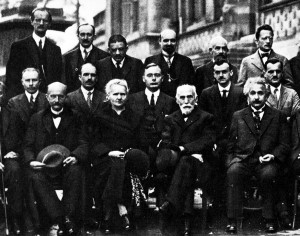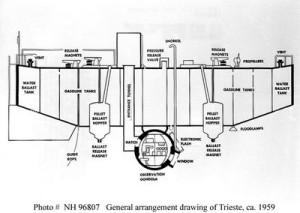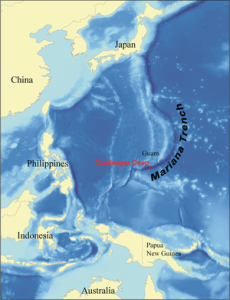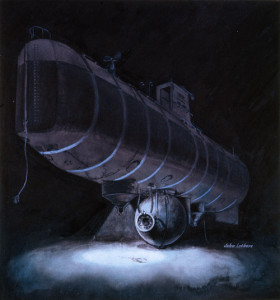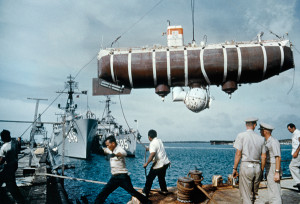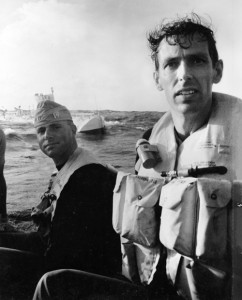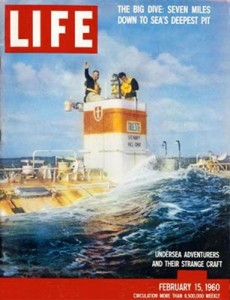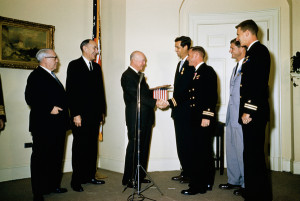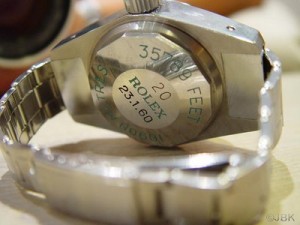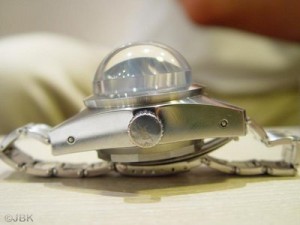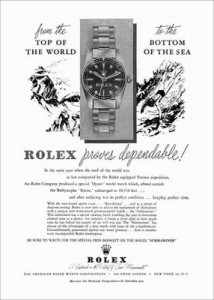Jacques Piccard: 36.000 feet into the Mariana Trough
Jacques Ernest Piccard was born on the 28th of July 1922 (1922-2008) in Brussels, Belgium. His father Auguste was a famous scientist who discovered Uranium 235 (he also called it Actinuran).
In October 1927 Auguste was present at the fifth Solvay international conference about electrons and fotons in Brussels. The picture above shows Auguste in the upper left corner, Marie Curie is in the middle and in the front right corner is Albert Einstein. At the conference they discussed the Quantum Theory of Einstein.
Auguste became interested in hot air balloons as a way to observe the cosmic radiation in the upper atmosphere. With his experiments he proved a part of the Relativity Theory of Einstein. In 1931 reached a record height of 50.000 feet in a balloon with the first pressure cabin, becoming the first person to get to the stratosphere and return safely.
With his experiences with the balloon Auguste started to develop a vessel with which he could submerge into the sea. According to the laws of buoyancy external tanks of the vessel needed to be able to dump their lighter than water fuel in order to fill the tanks with sea water; this gave enough negative buoyancy to submerge.
In 1943 Jacques Piccard started studying Economics at the University of Geneva but he quitted to go to the French First army. After the war he became more and more interested in the activities of his father. In 1948 the first prototype, named Bathyscape, was made thanks to the money from a Belgium scientific foundation. This vessel successfully made a unmanned descent to 4.600 feet but was damaged during it’s return in rough seas. In 1953 a second version was built for the French Navy. The city of Trieste ordered a third version with which a record depth of 10.335 feet was reached near the Italian island Ponza.
In 1956 Jacques Piccard contacted the US Navy. He went, with his vessel Trieste, to San Diego to work together with scientists who were studying the biological and acoustic properties of deep scattering layers. Two years later the Navy bought the Trieste and they hired Piccard as a consultant. The Navy thought that the Trieste could also be useful in case of a submarine accident and saving the crew. In the first 17 months Trieste made 22 dives, breaking three depth records.
In the early morning of the 23th of January 1960 Jacques Piccard and Lt. Don Walsh, a submarine officer, entered the Trieste in the rough seas near Guam. This was the start of a 36.000 feet dive into the Challenger Deep gorge in the Mariana Trough.
The Trieste didn’t have equipment on board to do experiments because the purpose of the dive was to show that it could reach this depth. The descent was without any problems until, at 30.000 feet, Piccard en Walsh heard a loud crack. Non the less they continued their descent and finally they landed in a tobacco brown sludge at 35.800 feet. Walsh described the experience as “being in a big bowl of milk”. According to them they saw a new kind of shrimp and a flat fish but marine biologists later said that that wasn’t possible at this depth with a pressure of 17.000 psi.
After seeing the cracks in the windows of the Trieste Piccard after 20 minutes decided to start the ascent. Piccard and Walsh returned to the surface without any further problems.
The mission received world wide attention and later Jacques Piccard, together with well known geologist Robert Deitz, wrote the book ‘Seven Miles Down’.
Pic.: Jacques Piccard and Lt. Don Walsh receiving a medal from President Eisenhower
Rolex had developed a special watch, the Deep Sea Special, for the descent into the Mariana Trough. The watch was attached to the outside of the vessel and after the return to the surface the Rolex was still ticking happily after having withstood a pressure of 17.000 psi.
Jaap Bakker
Leave a Reply

